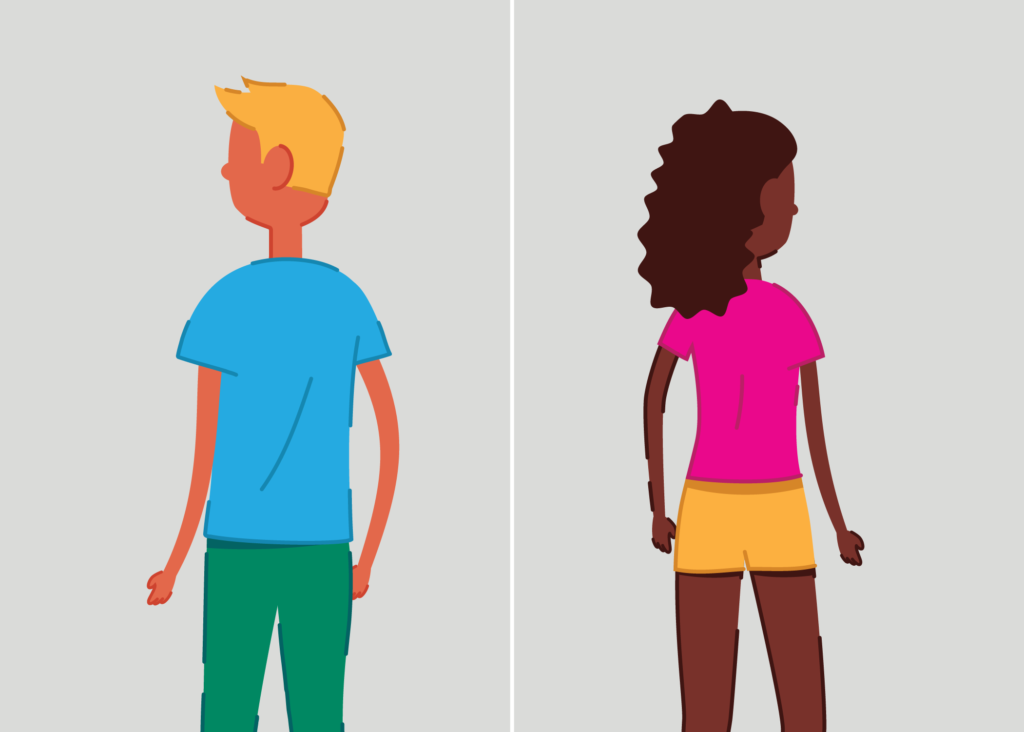Since humans are social creatures, relationships are a major part of how we define ourselves and find value in life. Relationships influence our personalities, our decisions and our overall well-being.
While they can be enriching sources of deep emotional connection and joy, not every relationship is positive. It’s important to know how to tell the difference between a healthy relationship, and an unhealthy relationship—especially when it comes to choosing an intimate partner.
Signs of a Healthy Relationship
The best way to determine if a relationship is healthy is to look at it carefully and see if it has positive qualities that signify a good relationship. These qualities can include, but are not limited to:
- Consistent and demonstrated respect in communication and interaction, which includes acknowledging and responding positively to boundaries.
- Positive communication and socialization that provides affirmation, acceptance, and inclusion.
- A general sense of peace, well-being, happiness and safety associated with the person.
- A willingness to be open and vulnerable without routinely feeling fear of rejection or judgment.
- A willingness to compromise, understand one another better, and work through challenges together.
While no relationship is perfect if positive behaviors like these do not occur frequently it may be a time to reconsider the current state of the relationship.
Signs of an Unhealthy Relationship
Because relationships, particularly intimate partner relationships, have many nuances, determining if a relationship is unhealthy can be difficult. It’s not uncommon for people to miss signals that a relationship is unhealthy. Some subtle signs of a negative relationship can include, but are not limited to:
- Routine ignorance of boundaries, and an unwillingness to learn or pay attention to them.
- Consistent disrespectful, snide, condescending or generally hurtful remarks or conversations.
- A nagging feeling of anxiety, fear or worry about the relationship, which is not eased by conversations with the other person.
- An unwillingness to discuss or deal with problems.
- Consistent rejection or refusal to accept the other person and their wants or needs.
- Controlling or domineering behaviors, such as restricting or monitoring communication with or access to loved ones, financial bullying and overly jealous behaviors.
- Emotional manipulation and routine targeting of stressors and vulnerabilities in an effort to control the other person’s actions and decisions.
- Purposeful neglect or exclusion.
- Purposeful exposure to or inclusion in negative, harmful or dangerous activities against the other person’s will.
- Manipulation of codependent (people-pleasing) behaviors.
These signs of negativity can manifest themselves in verbal, physical, sexual, financial and many other scenarios. Additionally, if such negative signs are allowed to continue, they may develop into more serious red flags, which may signal that a relationship situation should change.
Intimate Partner Violence
Intimate partner violence (IPV), also known as domestic violence, makes up 15 percent of all violent crime in the United States, and it shows up indiscriminately in every level of society. According to the CDC, “the term ‘intimate partner violence’ describes physical violence, sexual violence, stalking, or psychological harm by a current or former partner or spouse. This type of violence can occur among heterosexual or same-sex couples and does not require sexual intimacy.”
IPV can include sexual, physical and psychological aggression/abuse, along with stalking and the controlling of a financial, social or job situation. Additionally, while IPV can and does happen against males, the vast majority of IPV is committed against females. One in three women and one in four men have been physically abused by a partner in their lifetime, and one in seven women and one in 18 men have been stalked by their partner during their lifetime. Some signs of IPV include:
- Unwanted or forced sexual interaction, which includes everything from sexual harassment and assault in all forms. This includes unwanted touching, conversations, remarks, or sexting.
- Verbal abuse such as threats, yelling and swearing.
- Physical abuse such as slapping, punching, shoving, hair pulling and any other physically aggressive behavior.
- Consistent jealousy, suspicion or anger, even if such emotions are unwarranted.
- Controlling of a partner’s time and money.
- Partner isolation and preventing a partner from leaving a home or situation for any reason.
Solutions for IPV
In intimate partner relationships, the victimized partner often has no way out, or doesn’t know how to contact someone for help. But there is hope, and many solutions can help the victimized partner escape the situation. To start with, if you know someone who is in danger, call 911 immediately. Also, the National Domestic Violence Hotline is always available for calling (1-800-799-7233) and live chat in English and Spanish, and caring, professional advocates are always available to talk. Local resources like the YWCA and Miriam’s House are also available. And if you don’t feel comfortable reaching out to any of these resources, find a trusted friend or relative to confide in who will offer you a listening ear. Furthermore, we at Community Access Network are here to offer a helping hand in your situation. We take great pride in our ability to provide for our community, and if you need somewhere safe to go and talk with someone, we’re here to be that for you. If you have any other questions about relationships and social or mental health, please contact us today!
